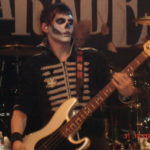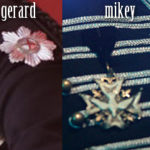From Wikipedia: The Order of the Holy Spirit was an Order of Chivalry under the French Monarchy. All Knights of the order were also members of the Order of Saint Michael. The symbol of the order is known as the Cross of the Holy Spirit. This is a Maltese Cross (i.e. a cross formed by the meeting for the points of four isosceles triangles); at the periphery, the points of each triangle are rounded, and between each triangle there is a fleur-de-lis. Imposed on the centre of the cross is a dove. The eight rounded corners represent the Beatitudes, the four fleur-de-lis represent the Gospels, the twelve petals represent the Apostles, and the dove signifies the Holy Spirit.
During the French Revolution the Order of the Holy Spirit was officially abolished by the French government along with all other chivalric orders from the Ancien Regime, although the exiled Louis XVIII continued to acknowledge it. Following the Restoration, the order was officially revived, only to be abolished again by the Orleanist Louis-Philippe following the July Revolution in 1830. However, the Legitimist pretenders to the French throne have continued to nominate members of the order, long after the abolition of the French monarchy itself.
From here: The eight pointed star is in based on the cross of St John. It originated in the Maltese Cross, the emblem of the Knights of Malta, and was used by the Knights of St John of Jerusalem at the time of the crusades.
The Knights of St John of Jerusalem were primarily a charitable, non-military organisation that existed between the eleventh and twelfth centuries. A white or silver cross on a dark background was adopted by these knights or ‘hospitallers’ as they were known, because of their charity toward the sick and poor in setting up hospices and hospitals. Later they did in fact assist the knights of the crusades with their goodwill and also military assistance in an effort to win back the Holy Land.
The Knights of St John eventually moved to the island of Malta and so the symbol became known as the Maltese Cross. The need for an identifiable emblem for the Knights was crucial, because due to the extensive armour which covered their entire body and faces, the Knights were unable to distinguish friend from foe in battle.
During the battles that took place throughout the period of the Holy Wars, one of the Saracens used fire extensively as a weapon. As the Crusaders advanced upon the walls of a city the Saracens resorted to throwing burning naphtha and oil upon the advancing knights. At sea, the Saracens would sail war vessels containing naphtha, rosin and sulphur into the vessels of the knights.
Many Knights of St John were called upon to perform heroic deeds, rescue fellow Knights and extinguish fires. In acknowledgement of their feats of bravery, these Knights wore a Maltese Cross that was decorated and inscribed in acclaim for their actions. It is, perhaps, here that the first association of the cross with firefighters was born.
Wherever the line between myth and truth lies is not exactly known, but it can perhaps be said without contradiction that the Maltese Cross and also any derivatives are regarded as a symbol of protection and courage. It does, perhaps, in simple terms identify with the fact that the firefighter who wears the badge could, and sometimes do, lay down his/her life for others in the same way as the Crusaders sacrificed their lives so many years ago.
From here: The eight-pointed star is the Star of Redemption or Regeneration and represents baptism.









